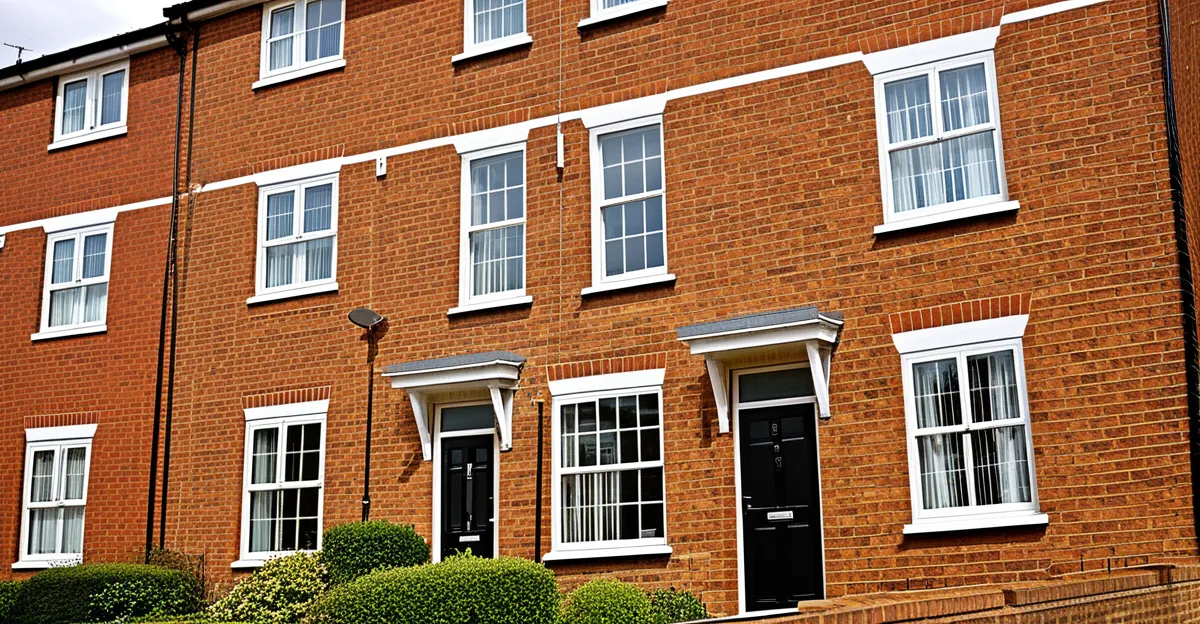Overview of the Rental Market’s Influence on UK Real Estate Prices
Understanding the relationship between rental market demand and UK real estate prices is fundamental to grasping property value fluctuations. When rental demand in the UK rises, property owners often see an immediate uptick in property values rental demand directly drives. Higher rental demand signals investors that a property can generate steady income, which pushes up prices accordingly.
Key drivers linking rent and real estate values include rental affordability, population growth, and supply constraints. For instance, a tight rental market reduces available housing, causing competition that increases both rents and sale prices. This is especially evident in urban centers where demand outpaces supply.
Also read : What Are the Future Trends in Real Estate Investments in the UK?
Rental shifts quickly influence sales prices. If rents surge, potential buyers might anticipate increased returns, bidding property prices upward. Conversely, rent drops can depress property prices as profitability declines. Thus, fluctuations in the rental market create a feedback loop directly impacting UK real estate prices.
This interconnectedness means stakeholders—buyers, sellers, and investors—must carefully monitor rental market trends UK to navigate the evolving property landscape effectively.
In the same genre : What Are the Future Trends in Real Estate Investments in the UK?
Impact of Rental Demand on Property Values
The rental demand UK plays a crucial role in shaping property values rental demand by intensifying competition for available housing. In regions where rental demand surges, such as major cities, house prices often rise sharply due to the influx of tenants seeking accommodation. This heightened demand incentivizes investors to increase buy-to-let investment, aiming to capture consistent rental income.
The effect of this phenomenon is particularly strong in areas suffering from a housing shortage. Limited supply not only drives rents up but also inflates sale prices, as both buyers and landlords vie for properties. This shortage-tightened rental market fuels a cycle of price inflation.
Moreover, increased rental demand encourages more buy-to-let acquisitions, as investors expect returns from rental yields to remain strong. This investor behavior further reduces housing availability for owner-occupiers, contributing to upward pressure on UK real estate prices. Understanding the dynamics between rising rental demand and resulting property valuations is essential for stakeholders navigating these competitive markets.
Impact of Rental Demand on Property Values
Rental demand UK strongly influences house prices, particularly in high-demand urban regions. When rental demand surges, it often signals a housing shortage effect, as fewer properties are available to meet growing renter needs. This scarcity pushes up rents, which in turn leads to higher property values rental demand supports. Buyers anticipate sustained rental income, making them willing to pay premiums.
This environment also affects investor behaviour. Buy-to-let investment becomes more attractive as rising rents improve potential returns. Investors enter the market seeking properties that offer strong rental prospects. This demand further tightens supply, creating a feedback loop that inflates property prices.
Moreover, rental market shortages exacerbate price inflation. Limited housing stock means each property becomes more valuable for both living and investment purposes. Areas experiencing significant rental demand increases often see noticeable escalations in UK real estate prices. This dynamic highlights how vital it is to monitor rental demand UK trends as essential indicators of future property value movements.
Rental Yields and Their Effect on Real Estate Pricing
Rental yields UK represent the annual rental income divided by the property’s market value. This key metric is essential for evaluating property investment returns. When yields are high, investors view properties as more attractive, often leading to pricing strategy rental yields that reflect expected income rather than just capital appreciation.
For example, regions with lower UK real estate prices but relatively strong rent price trends UK may show higher rental yields UK, enticing investors to enter these markets. In contrast, expensive areas like London often feature lower yields, as high sale prices outpace rent increases. This influences investor behavior and property valuations: where yields drop, prices may stagnate or slow in growth.
Investors constantly monitor these rental yields UK to make informed buying decisions, balancing between potential rental earnings and capital gains. Shifts in yields can quickly affect sale prices, as properties that once offered strong returns may no longer justify high valuations. Understanding how rental yields UK interplay with property investment returns and sales prices is crucial for stakeholders aiming to navigate the UK real estate market effectively.
Rental Yields and Their Effect on Real Estate Pricing
Rental yields UK serve as a critical metric in understanding property investment returns and directly influence pricing strategy rental yields across the market. Rental yield is calculated by dividing annual rental income by a property’s purchase price, offering investors a clear indication of expected profitability. High rental yields often justify higher UK real estate prices, as investors prioritize properties promising stronger income streams.
Comparing rental yields across regions reveals notable trends. For instance, some northern cities exhibit higher rental yields compared to London, where property prices are elevated but rental yields tend to be lower. This disparity affects investor decision-making, with many seeking areas offering balanced rental yields and capital growth.
Pricing strategy rental yields also respond quickly to rental market trends UK, as shifts in rent prices recalibrate expected returns. When rental yields decrease, property values typically rise since buyers accept lower income to gain long-term appreciation. Conversely, rising yields can lead to downward price adjustments, as investors demand better immediate returns. Understanding these dynamics is essential for accurate property valuation in the UK real estate market.
Trends in Rent Prices and their Influence on Sales Market
Recent rent price trends UK show noticeable upward pressure, especially in urban areas, which strongly impacts UK real estate prices. When rents rise quickly, a clear correlation rent and sale prices emerges: investors and buyers anticipate better returns, driving higher property bids. This effect accelerates real estate market cycles by shortening the time between rental growth and sales price adjustments.
In London, for example, rising rent prices have often led to swift increases in sale prices, as demand remains high amid limited supply. Conversely, northern regions exhibit more moderate rent growth, resulting in slower property value changes. This regional variation underscores how rent dynamics shape local market behaviors.
Rapid rent shifts can trigger market acceleration, with buyers competing aggressively to secure properties expected to yield strong rental income. Such cycles sometimes cause volatility, challenging stakeholders to time purchases or sales effectively. Monitoring rent price trends UK enables better forecasting of property price movements and offers valuable insights into evolving real estate market cycles.







